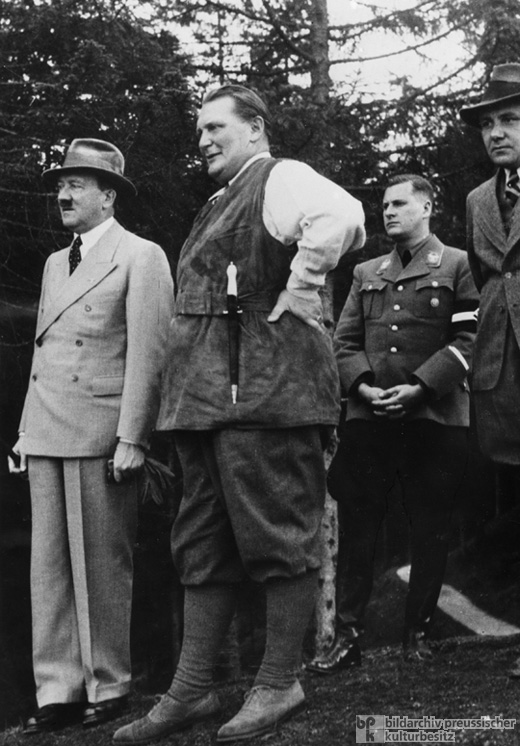|
Göring and Hitler on the Obersalzberg (October 1936)
From left to right, we see Hitler and Hermann Göring (foreground), and Baldur von Schirach, head of the Hitler Youth, and Martin Bormann (background). The four had gathered on the Obersalzberg to discuss the Four-Year Plan. The National Socialist state-directed economic policy formulated in the Four-Year Plan aimed to arm Germany for war within four years. This goal was supposed to be achieved through autarky and increased production in areas crucial to war efforts. The plan was announced at the 1936 Reich Party Rally and was implemented in October of the same year. Hermann Göring was put in charge of the Four-Year Plan, a responsibility that entailed state intervention into private business, which, in turn, had to adapt to the new standards. In 1937, to accelerate the production of war materials, he founded the “Reich Works Hermann Göring," a state company that initially competed with private heavy industry but later united with the latter's chief representatives. Martin Bormann had already distinguished himself in the economic sphere in 1933, when he initiated the "Adolf Hitler Fund for German Business," which provided the NSDAP with a lucrative source of financing.
In 1933, Hitler had bought a house on the Obersalzberg near Berchtesgaden. He subsequently turned the house into his residence, the "Berghof." The original owners of neighboring properties were then driven out and the mountain declared the "Führer's Reserved Area." It became a second center of power alongside Berlin. Hermann Göring, Martin Bormann, and Albert Speer also owned houses on the Obersalzberg. Göring, who was a passionate hunter and who also held the offices of "Reich Forestry Superintendant" and "Reich Master of the Hunt," is seen here in hunting clothes; Hitler and Bormann are both dressed in civilian clothing, while von Schirach is in uniform.

|


